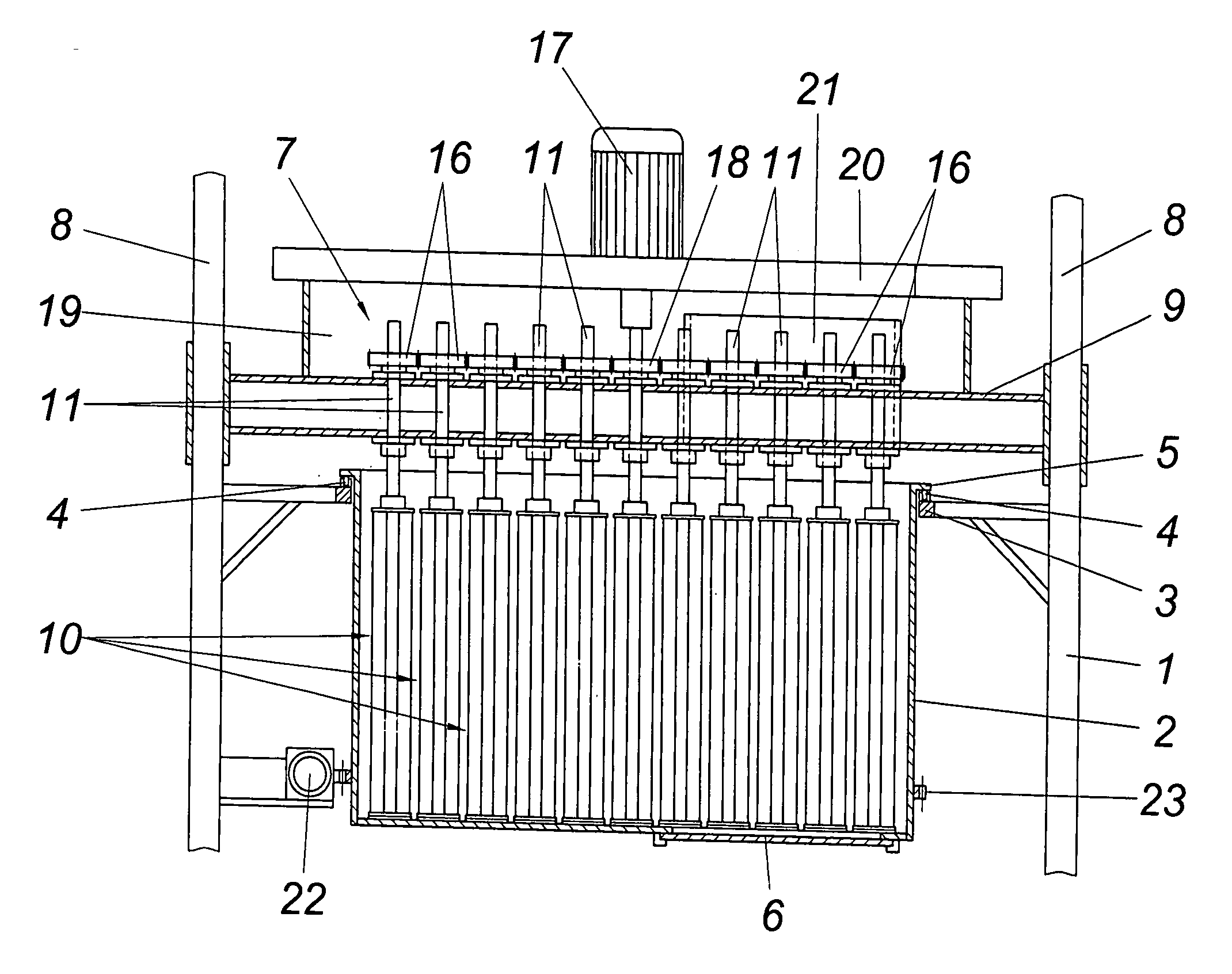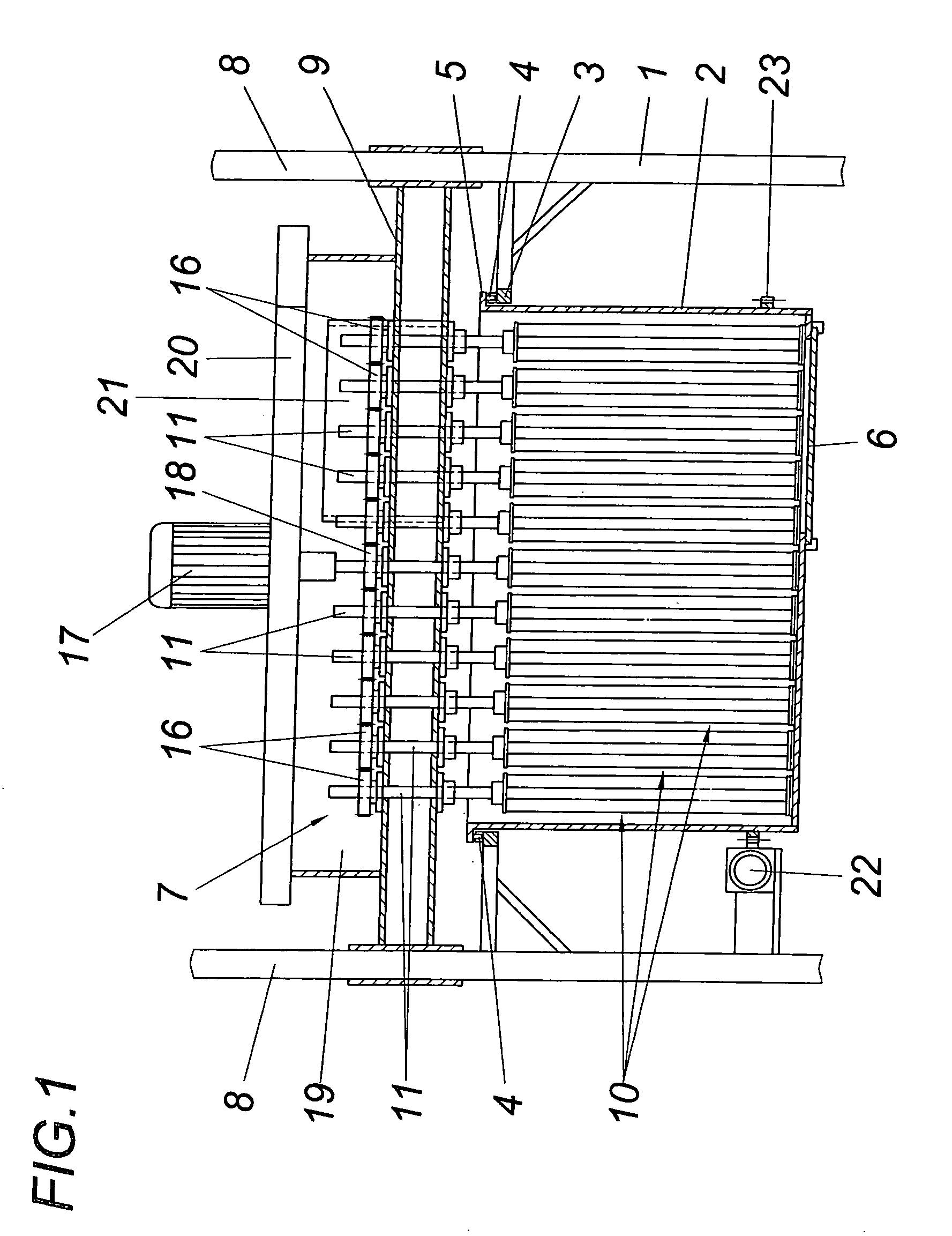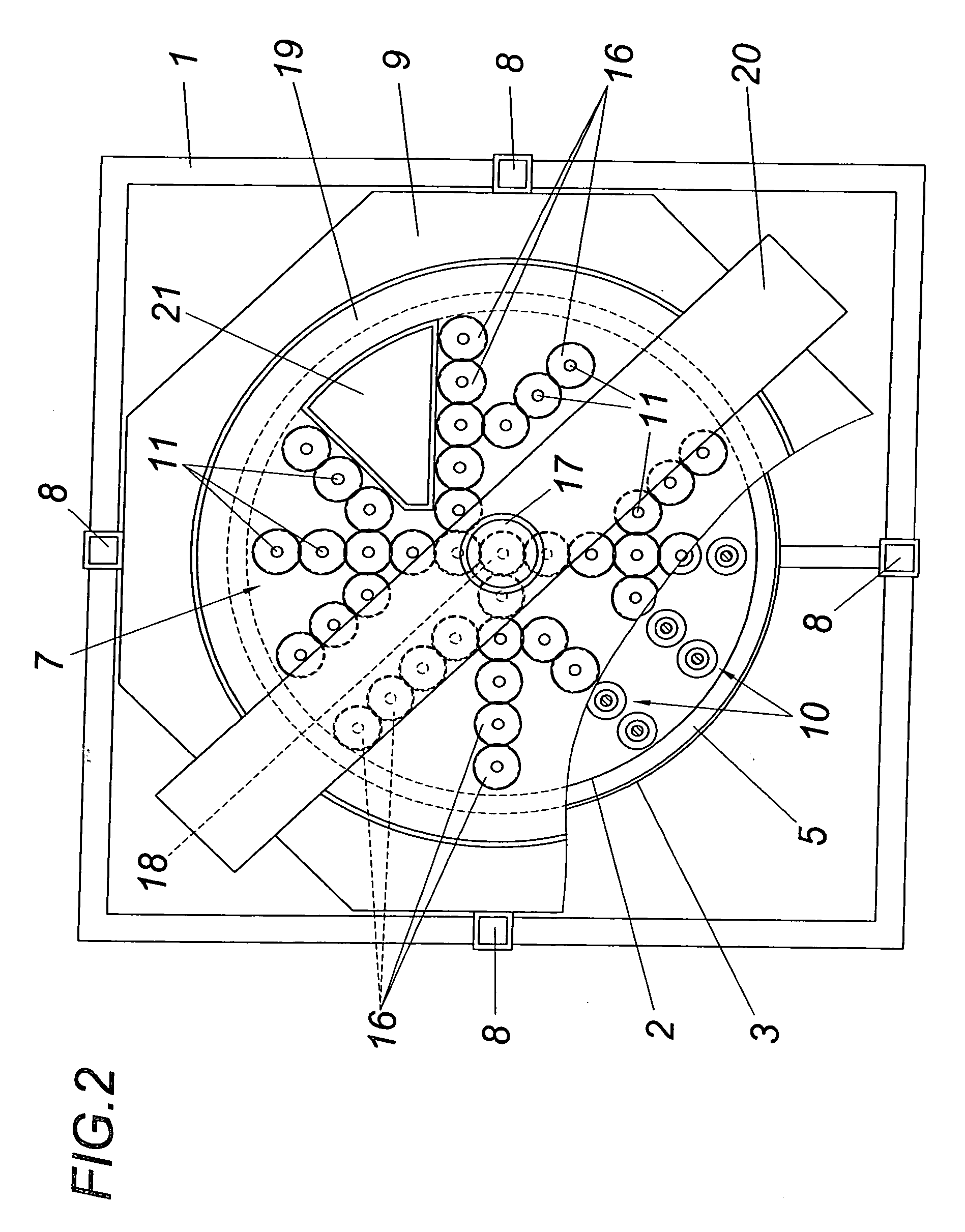Apparatus for foaming a slurry
a technology of apparatus and foaming slurry, which is applied in the direction of clay preparation apparatus, cement mixing apparatus, mixers, etc., can solve the problems of difficulty in controlling the size of the forming pores, unable to foam slurries insufficiently with conventional agitators, and unable to control the pore distribution of foaming slurry, etc., to achieve simple construction, increase the foaming of the slurry, reduce the effect of air quantity
- Summary
- Abstract
- Description
- Claims
- Application Information
AI Technical Summary
Benefits of technology
Problems solved by technology
Method used
Image
Examples
Embodiment Construction
[0015] The illustrated apparatus for foaming a slurry comprises a frame 1 in which a cylindrical vessel 2 is rotatably held about the vessel axis for receiving the slurry to be foamed. For this purpose the frame 1 forms a carrying ring 3 into which the vessel 2 is hooked. Track rollers 4 are provided for supporting the vessel 2 on the carrying ring 3. The vessel 2 rests on the same via a boundary flange 5. A device 6 for discharging the foamed slurry in the form of a discharge slide is provided in the floor of the vessel 2.
[0016] An agitator 7 is used for foaming the slurry, which agitator is held in a carriage 9 being vertically adjustable on guide pillars 8 and consists of a plurality of agitating units 10. Said agitating units 10 form rotors which are parallel to the vessel axis and which each consists of a drive shaft 11 according to FIGS. 3 and 4 on which disk-like retainers 12 and 13, between which the axially parallel agitator rods 14 are arranged. Said agitator rods 14 whic...
PUM
| Property | Measurement | Unit |
|---|---|---|
| grain size | aaaaa | aaaaa |
| diameter | aaaaa | aaaaa |
| diameter | aaaaa | aaaaa |
Abstract
Description
Claims
Application Information
 Login to View More
Login to View More - R&D
- Intellectual Property
- Life Sciences
- Materials
- Tech Scout
- Unparalleled Data Quality
- Higher Quality Content
- 60% Fewer Hallucinations
Browse by: Latest US Patents, China's latest patents, Technical Efficacy Thesaurus, Application Domain, Technology Topic, Popular Technical Reports.
© 2025 PatSnap. All rights reserved.Legal|Privacy policy|Modern Slavery Act Transparency Statement|Sitemap|About US| Contact US: help@patsnap.com



